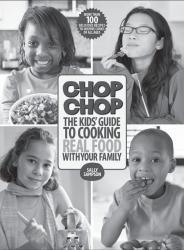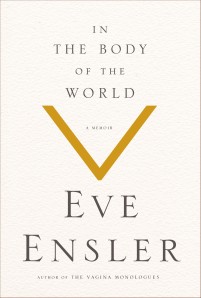I don’t cook very well. My family is bored with my rotating repertoire of chicken, turkey meatballs, and pasta with kosher turkey sausage.
I did have a creative period where I made chicken fajitas and a pretty decent meatloaf. But those didn’t last long. My excuse is that I’m always short on time, but the truth is that cooking intimidates me. I’m from the Birds Eye generation where convenience trumped fresh food and cooking itself.
I’ve been waiting a long time for a food writer such as Sally Sampson. Sampson is the founder and publisher of a nonprofit organization that publishes a delightful magazine for children called Chop- Chop: The Fun Cooking Magazine for Families. Sampson not only finds the fun aspects of cooking; she demystifies it and elevates simple cooking to its own art form.
Sampson is no stranger to creating recipes. With 22 cookbooks under her belt, she decided the time was right to combine her expertise with her burgeoning interest in health care and preventing obesity in children. In a recent interview at ChopChop’s offices in Watertown, Sampson noted that ChopChop Magazine and her new cookbook “ChopChop: The Kids’ Guide to Cooking Real Food With Your Family” allows her “to address obesity by having doctors prescribe cooking at well-child visits. And I’m using my skills [as a food writer and healthy-eating advocate] in the magazine recipes and the new cookbook.”
ChopChop Magazine, a quarterly publication, is distributed in 10,000 pediatricians’ offices in all 50 states. The magazine is endorsed by the American Academy of Pediatrics, which reviews every issue. Since its launch in 2010, ChopChop boasts a circulation of 500,000 with 20 percent of the issues printed in Spanish. The magazine is funded primarily through sponsors such as the New Balance Foundation, and Children’s Hospitals in Boston, Cleveland and Philadelphia. ChopChop recently garnered the equivalent of an Oscar in the food world when it was named “Publication of the Year” by the James Beard Foundation.
Sally Sampson’s new cookbook is an extension of her nonprofit’s popular magazine.
No doubt ChopChop’s appealing design and clear language, along with bright colors and gorgeous food photography, were factors in wining the prestigious Beard Foundation award. But there is something more at stake here. It’s the recipes themselves that are innovative. Although the magazine and new cookbook are aimed at children ages 5 to 12, the recipes are surprisingly sophisticated without being complicated.
“I think of kids as inexperienced cooks,” said Sampson. “We cover the basics in our recipes, such as what kind of kitchen utensils they’ll need and whether or not making a recipe requires adult supervision. There are not too many steps in these recipes and not too many ingredients. And I don’t cook anything that goes into two pans.”
Sampson divides her recipes into three categories: the basics; the fancy version of the basics, in which kids can bump up a recipe with spices or herbs; and the expert level, which requires things such as kneading dough or using a blender. Adults need to be on hand to help with most recipes, which makes the ChopChop way of preparing food an intergenerational experience. Bear in mind there are no peanut butter and jelly sandwiches here. To prove how easy yet still elegant food preparation can be, Sampson taught me to make a basic vinaigrette dressing with olive oil, vinegar and mustard. I drizzled it onto a simple spinach salad that I tossed with almonds and raspberries. After my family got over their initial surprise, they were impressed. Preparation time was less than 10 minutes. We haven’t had store-bought salad dressing since then.
“Eating well is cooking well,” noted Sampson. “If you can’t cook, then you don’t have a really clean diet. [ChopChop’s] No. 1 criterion is that it tastes good. We don’t want to demonize sugar and fat, but reduce them while being flavorful. We’re competing with fast food and takeout, which is causing an uptick in the obesity rates.”
Sampson’s solution to the dinner dilemma is straightforward too. She said the key lies in “a well-stocked pantry. Beans, pasta, rice and any other staples you can think of. Have olive oil on hand and a couple of vinegars, spices, onions, garlic, carrots, lemons and lime. Tofu is also good to have in the house. If you eat meat, have chicken breasts in the freezer. You can make an amazing salad with basic ingredients.”
As for me, I recently spiced up my pasta dishes by making Sampson’s “World’s Quickest Tomato Sauce.” Foregoing store-bought sauce, I also dispensed with sugar and, in some cases, fillers and preservatives.
As Sampson noted, “Cooking can seem out of reach for some people. We want to focus on the joy of cooking for kids and adults alike.” She’s helped me to do just that.










